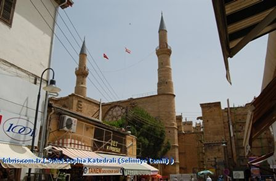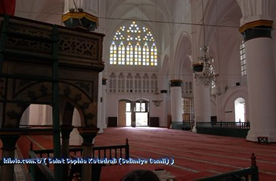Selimiye Mosque - Nicosia
|
|||
This ancient church is the chief mosque in the northern state of Cyprus, and the great festivals of Bayram and other Moslem gatherings are conducted here. It was formerly the cathedral of St. Sophia which was built in the period 1209 A.D. to 1228, over the ruins of a previous building. Only recently, in 1976, have the ruins of the ancient building before 1200 A.D. been discovered, on the southern side. In style of architecture, St. Sophia resembles the famous mediaeval cathedrals of France. The church was severely damaged by earthquakes in 1491, 1547 and 1735 A.D. and yet, as we see it today, the cathedral has survived. What is the reason for this? One would expect such high buildings to be razed to the ground during those severe earthquakes that occurred some centuries ago, for in those days, reinforced concrete and steel girders were unknown. The builders of ancient Gothic cathedrals always strived to make them as high as possible, to reach "up to heaven" and so inspire both awe and solemnity. The problem was how to do this, and, at the same time ensure that the walls would not collapse. This was done by building stone pillars outside to support the walls which are known as buttresses. If you live in a "posh" villa in Cyprus, your walls should be supported at the corners by buttresses. If there are none, then get out of the house quickly in the next earthquake. |





